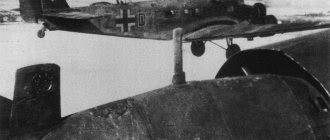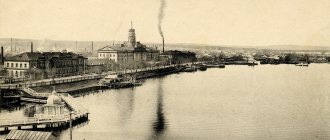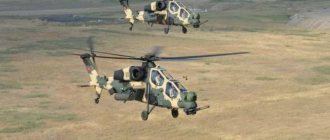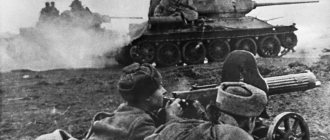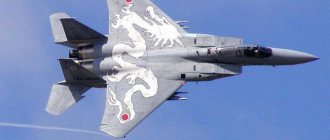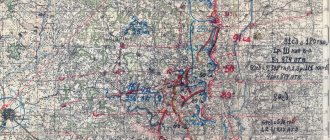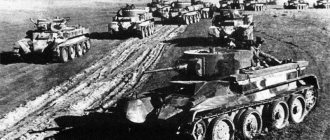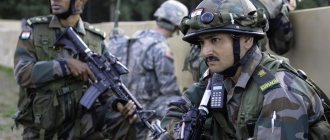COMBAT COMPOSITION OF GERMAN TANK DIVISIONS ARMED WITH PZ.38(T) TANKS AS OF JUNE 22, 1941
COMBAT COMPOSITION OF GERMAN TANK DIVISIONS ARMED WITH PZ.38(T) TANKS AS OF JUNE 22, 1941
As is known, on June 22, 1941, about 3,680 tanks and assault guns were concentrated in the East, including the reserve of the Wehrmacht High Command (2nd and 5th Panzer Divisions).
Thus, Pz.38(t) made up 17% of the German tank fleet of that period. Four tank divisions (7th, 12th, 19th and 20th) were part of General Hoth's 3rd Panzer Group (Army Group Center), the 8th Panzer operated as part of the 4th Panzer Group General Hoepner (Army Group North).
The 3rd Panzer Group delivered the main blow to units of the 126th and 128th Soviet Rifle Divisions stationed along the border. The German troops in this sector had a manifold superiority in men and an absolute superiority in tanks. Therefore, on the very first day, the Soviet rifle divisions, without having time to turn around, were crushed and thrown back from the border. Providing unorganized resistance, they began to retreat to the northeast. German tanks managed to freely capture the bridges across the Neman and on the afternoon of June 22 rushed to the city of Alytus.
The only Red Army formation in this direction that gave a worthy rebuff to German units on the first day of the war was the 5th Tank Division of the 3rd Mechanized Corps. In the afternoon of June 22, the 7th German Tank Division approached the city of Alytus, on the eastern outskirts of which the division was occupying defenses. An oncoming tank battle unfolded on the right bank of the Neman, in which a significant number of T-34 and T-28 medium tanks took part on the Soviet side. Most of the latter, however, were very worn out and for this reason were used for firing from the spot. However, the German offensive could not be stopped. The 5th Panzer Division suffered heavy losses, there was not enough fuel and ammunition, communication between units and subunits was disrupted, and at night they began to retreat to Vilnius in disarray.
Pz.38(t) Ausf.F on the street of a Belarusian village. Judging by the tactical badge next to the cross, this vehicle belongs to the 7th Panzer Division. Beginning of July 1941.
The oncoming tank battle near Alytus on June 22, 1941 was the first clash of this kind in the Great Patriotic War. The command of the German 3rd Panzer Group, in its report to the headquarters of Army Group Center, gave this battle the following description: “On the evening of June 22, the 7th Panzer Division fought the largest tank battle during this war (World War II. - Author's note) to the east Olita against the 5th Panzer Division. 70 enemy tanks and 20 aircraft (at the airfield) were destroyed. We lost 11 tanks."
It should be noted that in their report the Germans indicated only their irretrievable losses, while the Soviet side indicated their total losses. Considering that for every irretrievably lost tank there are three or four destroyed, it can be argued that the total losses of the 7th Panzer Division amounted to 40–50 combat vehicles. However, the battlefield remained with the German troops, and therefore they had the opportunity to repair most of the damaged tanks and put them back into service. Our damaged vehicles, captured by the enemy, automatically fell into the category of irretrievable losses.
Red Army soldiers inspect a damaged Pz.38(t) Ausf.G tank. July 1941.
Subsequently, units of the 3rd Tank Group fought near Smolensk and Vitebsk. Here they often encountered heavy Soviet KB tanks, against which the light Pz.38(t) were completely powerless. One of these battles is described in the report on the actions of the 29th Tank Regiment of the 12th Tank Division dated August 30, 1941:
“August 30 at about 10:10 a.m. The first battalion advanced with the task of taking a defensive position near the Popovka railway station, covering the right flank of the division. The battalion consisted of 2 Pz.II, 18 Pz.38(t) and 5 Pz.IV. The regiment commander sent forward reconnaissance, which reported that there was Russian infantry in the Popovka area. As a result of the attack, the enemy, up to a battalion strong, holding positions east of the railway line, was driven back to Chernikovo with heavy losses. At 12 noon, four enemy heavy tanks (52 tons) came out from the southern outskirts of Chernikovo and opened fire on the first battalion from a long distance. Then two more enemy tanks appeared 1 km northeast of the station and entered the battle. Our fire was ineffective. The enemy managed to destroy one Pz.38(t) and one Pz.IV with their fire and retreated back to Chernikovo. Then the enemy tanks tried to attack again, but they were driven away by artillery fire, and they took cover between the houses in Chernikovo.
Our losses were: one killed, three wounded, the Pz.IV was completely destroyed, and the Pz.38(t) was heavily damaged.”
Column of Pz.38(t) Ausf.C tanks. Eastern Front, summer 1941. A flag with a swastika, stretched on the roof of the power compartment, made it easier for German aircraft to identify the vehicles.
Despite heavy losses, Soviet troops offered fierce resistance to the enemy. This can be judged by the following facts. As of September 10, 1941, 62 Pz.38(t) tanks remained in service with the 7th German Tank Division, with irretrievable losses amounting to 59 vehicles. On the same date, the 8th Tank Division had 78 combat-ready Pz.38(t) (20 tanks were irretrievably lost). In the 12th Panzer Division, 42 Pz.38(t) remained in service on August 26 (47 vehicles of this type were destroyed). As of August 25, the 19th Tank had 57 serviceable Pz.38(t) in service (irretrievable losses of 21 tanks), and the 20th Tank had 52 (irretrievable losses of 37 tanks). It goes without saying that other types of combat vehicles also suffered losses.
Pz.38(t) Ausf.G. from the 20th Tank Division, knocked out by units of the Red Army. Summer 1941.
Nevertheless, the 3rd Panzer Group continued to advance deeper into Soviet territory. Through Rzhev, Kalinin and Klin, its tanks advanced on Moscow, covering it from the north. At the end of November 1941, units of the 56th Tank Corps (6th and 7th Tank and 14th Motorized Divisions), striking at a weak point in the defense of the Soviet troops - the junction between the 30th and 16th armies, reached Moscow-Volga channel. The combat group under the command of Colonel Manteuffel (6th Infantry Regiment and 25th Tank Regiment) captured the bridge in Yakhroma on the night of November 28, secured a foothold on the right bank of the canal and began advancing towards Dmitrov, where army headquarters were located. The commander of the 1st Shock Army, Lieutenant General V.I. Kuznetsov, threw against the breaking through German tanks the only real force at his disposal at that moment - armored train No. 73 of the NKVD troops for the protection of railways. The armored train included an armored locomotive and two motorized armored cars D-2, armed with two 76-mm cannons each. Having reached the bridge, the armored train opened fire. Three Pz.38(t) tanks immediately caught fire, the rest opened direct fire. For more successful maneuvering and increasing the firing sector, the commander of the armored train, Captain F.D. Malyshev, ordered one motorized armored car to be uncoupled and taken to a parallel track. Now the German tankers had to fire at two targets. They, however, managed to knock out an armored locomotive, and one motorized armored car was forced to retreat to Dmitrov station. After quick repairs, he returned to the battlefield, which continued until dark. The Germans lost 12 tanks, 24 vehicles and at least 700 soldiers and officers in this battle. On November 29, a counterattack by the 123rd and 133rd separate tank battalions, the 29th and 44th rifle brigades, with artillery support, pushed the Germans back to the western bank of the canal and on November 30, having exhausted their offensive potential, went on the defensive.
Command tank Pz.Bef.Wg.38(t) of the battalion-regiment unit. Eastern Front, autumn 1941.
According to the recollections of the Germans, even the weather in those days was favorable to the Russians. On the afternoon of November 27, the temperature dropped to 40° below zero in just two hours. To combat the Arctic frost, Manteuffel's soldiers and officers had only knitted woolen helmets worn under the helmet, light and short overcoats and narrow boots. It would be impossible to fight even with a weak opponent in such equipment in forty-degree frost. It should be noted that in the winter of 1941/42, up to 40% of German soldiers on the front line suffered from frostbite on their feet.
Red Army soldiers inspect a captured German tank Pz.38(t) Ausf.F, presumably from the 22nd Tank Division. The area northwest of Stalingrad, 1942.
But the frost incapacitated not only the limbs of the soldiers. The oil in the engines froze, carbines, machine guns and machine guns refused to fire. Tank engines did not start. Is it any wonder, the Germans complain, that in this situation, Manteuffel’s battle group, despite stubborn resistance, failed to hold the Yakhroma bridgehead when soldiers of the Soviet 1st Shock Army, dressed in winter overcoats and felt boots, attacked it. The barrels of Russian machine guns peeked out from their fur covers, and the bolts of the machine guns were greased with winter oil. Nothing stopped the Russians from fighting. If necessary, they could lie in the snow for hours, secretly crawl up to German outposts and destroy them. The infantry was supported by T-34s, while the 25th Tank Regiment of the 7th Tank Division had only Pz.38(t) with 37 mm guns and several Pz.IV with 75 mm guns at its disposal.
During December 1, the Soviet 1st Shock Army crossed the canal, drove the enemy back from the west bank and captured a bridgehead southwest of Yakhroma. Over the next four days, our troops fought oncoming battles with German units here. As a result of these battles, the troops of the 1st Shock Army inflicted serious losses on the German units, finally thwarting their attempts to reach the eastern bank of the Moscow Canal. During these days, the 7th Panzer Division lost almost all of its Pz.38(t) and was later rearmed with German-made tanks. The total losses of the Wehrmacht in Pz.38(t) tanks in 1941 amounted to 796 units.
Pz.38(t) Ausf.G from the 22nd Panzer Division. Autumn 1942. Noteworthy is the non-standard equipment box at the rear of the turret.
At the beginning of 1942, the newly formed 22nd Panzer Division had the largest number of tanks of this type. Her baptism of fire took place in March 1942 during an attack on the positions of Soviet troops on the Kerch Peninsula. In the morning fog, units of the 22nd Division encountered Soviet units preparing to attack, became confused and suffered heavy losses. She had the opportunity to rehabilitate herself in early May 1942 during the operation carried out by von Manstein’s 11th Army to eliminate the Soviet bridgehead on the Kerch Peninsula. On the night of May 7–8, German infantry launched an assault on the positions of the 44th Army of the Crimean Front. Together with troops landed from assault boats, the infantrymen managed to capture the first line of defense of the Soviet troops and, which was their main task, an anti-tank ditch 10 m wide, stretching along the entire front line. In Paul Carel's book "Eastern Front" further events are described as follows:
“Tank companies and armored personnel carriers, quickly turning around, struck the second and third lines of the Soviet defense, broke the enemy’s resistance, reached the turn of the road to Arma-Eli and fell directly on the concentration area of the Soviet tank brigade.
Pz.38(t) Ausf.S tanks of the Slovak army during tactical training.
As planned, the 22nd Panzer Division now turned north, behind the two Soviet armies that were still fighting the 46th Infantry Division and the Romanian brigades. Everything went according to Manstein's plan. But then suddenly the situation changed. Towards the evening of May 9, heavy rain began. Within a few hours, the dirt roads and clay soil along the roadsides turned into a bottomless quagmire. Wheeled all-terrain vehicles and trucks were hopelessly stuck in it; only tracked vehicles retained the ability to move. Manstein's will collided with the forces of nature.
Slovakian Pz.38(t), knocked out on the Eastern Front in 1941.
The armored fighting vehicles of the 22nd Panzer Division continued their advance until late at night, and then took up positions for all-round defense. When the clear dawn of the new day, May 10, broke, they were already deep in the rear of the Soviet 51st Army. The Germans repelled a powerful enemy attack with the involvement of large formations of armored vehicles. The rising wind soon dried up the land. The division continued moving north. On May 11, she was in Ak-Monay by the sea and, therefore, in the rear of the Soviet 47th Army. Ten Russian divisions found themselves in the cauldron. With this bold raid, the 22nd Panzer Division washed away the shame that stained it on March 20, 1942.”
By the beginning of the German summer offensive, in addition to the 22nd Panzer Division, six more Wehrmacht formations had Pz.38(t) tanks.
German unit symbols
These designations are usually not translated and are used in German in the name or description of the device. [ 1 ]
Down to Earth
Static unit. Typically assigned to units that had transportation deficiencies and were unable to move their artillery. Many of these divisions were crippled on the Eastern Front and were sent west to serve as coastal defense garrisons until sufficient resources were allocated to rebuild the division.
fortress
A non-standard division used to garrison critical areas. Smaller Festung units could consist of only two or three battalions.
Grenadier
Traditional term for heavy infantry. It is also a badge of honor for reduced morale when used alone.
Hunter
Traditional term for light infantry (translated as "Hunter"
).
They are usually equipped with mounted or motorized transport with (usually) lighter and smaller artillery pieces compared to regular infantry divisions. In many cases, Jäger
were mountain divisions, called
Gebirsjäger
.
This description by Jaeger
did not apply to the light divisions deployed in Africa (5th, 90th, 164th, 999th) or the five light mechanized divisions.
Climber
Traditional term for alpine ski troops.
Lehr
Demonstration/training block (translated as “teach”
).
Number
Translated as "Number"
.
The name is a placeholder
for a division with personnel but little or no combat assets. Typically there was no initial description of the type in the name; this was added when the unit received the combat asset designation (i.e., the 179th Division became the 179th Armored Division).
Tank
Armor (translated as “armored”
).
Fuse separation
Security unit dedicated to cleaning
rear areas; they could consist of two reinforced regiments or several separate battalions.
Storm
"Storm"
or
"Storm"
(translated as
"Storm"
).
Volkswagen
«
Gorodok" (translated as
"Town"
).
Volksgrenadier
A late-war shake-up with reduced size and increased close-quarters firepower. Many previously destroyed or badly mutilated infantry divisions were converted into Volksgrenadier divisions
divisions, and new ones were formed. Their combat prowess varied widely depending on the unit's experience and equipment.
Volkssturm
Translated as "storm of the people"
.
A national militia whose units were organized and trained by local Nazi Party leaders. They were placed under the command of the Wehrmacht
.
zbV
Short for "zur besonderen Verwendung"
means
"special purpose units"
(translated as
"for special use"
) created to meet special requirements, such as the
zbV Afrika
.
Air Force (Luftwaffe)
Main article: Luftwaffe
Hermann Goering's units
During the war, Hermann Goering's units grew from a separate police detachment to a full-fledged armored corps. The last epithet of Fallschirm
(
"parachute"
) was purely honorary.
- Hermann Göring
Division
Göring
Panzer Division , 1st
Hermann Göring
) - Hermann Goering's 2nd Panzergrenadier Division
Airborne divisions
To keep its existence secret, the German 1st Airborne Division was named the Flieger Division
division (
"aviator"
) in a series of
Luftwaffe
that controlled air assets rather than ground troops, called the 7th Flying Division (often translated as 7th Airborne Division).
, see: 1st Parachute Division) The division was later reorganized to create a series of nominally airborne divisions. Although they were called Fallschirmjäger
(
"paratroopers").
), only a few of them took part in amphibious operations at the beginning of the war and in practice most of them acted as regular infantry throughout their existence. Those with the fewest numbers won and retained elite status, but overall quality declined among the divisions with the highest numbers.
- 1st Parachute Division (7th Flying
Division became 1st Airborne Division in April 1943) - 2nd Parachute Division
- 3rd Parachute Division
- 4th Parachute Division
- 5th Parachute Division
- 6th Parachute Division
- 7th Parachute Division (formerly Erdmann
, a special formation of
Luftwaffe
on the Western Front) - 8th Parachute Division
- 9th Parachute Division
- 10th Parachute Division
- 11th Parachute Division (began formation in March 1945, fought only in battle groups)
- 20th Parachute Division (formation was ordered on 20 March 1945 in the Netherlands from the Parachute Training and Replacement Division. However, apart from images, the formation was never completed).
- 21st Parachute Division (formation was ordered on 5 April 1945 in the Netherlands as a field formation division. However, outside of the images, the formation was not completed).
Field units
- 1st Luftwaffe Field Division
- 2nd Luftwaffe Field Division
- 3rd Luftwaffe Field Division
- 4th Luftwaffe Field Division
- 5th Luftwaffe Field Division
- 6th Luftwaffe Field Division
- 7th Luftwaffe Field Division
- 8th Luftwaffe Field Division
- 9th Luftwaffe Field Division
- 10th Luftwaffe Field Division
- 11th Luftwaffe Field Division
- 12th Luftwaffe Field Division
- 13th Luftwaffe Field Division
- 14th Luftwaffe Field Division
- 15th Luftwaffe Field Division
- 16th Luftwaffe Field Division Eventually transferred to Heer
as 16th
Luftwaffe
(later 16th
Volksgrenadier
Division)
division
Luftwaffe
)
- Eventually transferred to Heer
as the 19th Grenadier Division (later 19th
Volksgrenadier
Division).
Luftwaffe Assault Division
, an association of
Luftwaffe
)
Training units
- 1st Training Division
- Parachute training and replacement department
Anti-aircraft divisions
- 1st Anti-Aircraft Division
- 2nd Anti-Aircraft Division
- 3rd Anti-Aircraft Division
- 4th Anti-Aircraft Division
- 5th Anti-Aircraft Division
- 6th Anti-Aircraft Division
- 7th Anti-Aircraft Division
- 8th Anti-Aircraft Division
- 9th Anti-Aircraft Division (completely destroyed in the Battle of Stalingrad)
- 10th Anti-Aircraft Division
- 11th Anti-Aircraft Division
- 12th Anti-Aircraft Division
- 13th Anti-Aircraft Division
- 14th Anti-Aircraft Division
- 15th Anti-Aircraft Division
- 16th Anti-Aircraft Division
- 17th Anti-Aircraft Division
- 18th Anti-Aircraft Division
- 19th Anti-Aircraft Division
- 20th Anti-Aircraft Division
- 21st Anti-Aircraft Division
- 22nd Anti-Aircraft Division
- 23rd Anti-Aircraft Division
- 24th Anti-Aircraft Division
- 25th Anti-Aircraft Division
- 26th Anti-Aircraft Division
- 27th Anti-Aircraft Division
- 28th Anti-Aircraft Division
- 29th Anti-Aircraft Division
- 30th Anti-Aircraft Division
- 31st Anti-Aircraft Division

